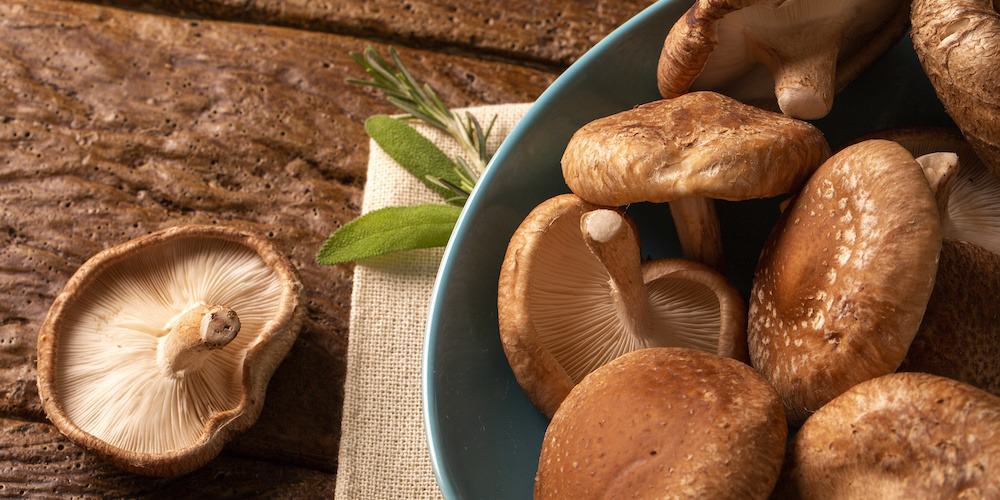BENEFITS OF SHIITAKE
✓ Potentially anti-cancer
✓ Boosts the immune system
✓ Protects the heart
✓ Source of vitamin D
What is shiitake?
Shiitake is also called oak lentin or edible lentin – also a literal translation of its Latin name, (Lentinula Edodes). In gastronomy, it is known as fragrant mushroom or black mushroom.
It originates from the Far East. The oldest written record mentioning shiitake dates back to the year 199, when it was presented to the Japanese Emperor by the Chinese. Today, this mushroom is the most cultivated species after the Paris mushroom! The Chinese have mastered its cultivation on logs since the 11th century and are currently the world’s largest producers.
Shiitake is used both in traditional medicine and gastronomy. It can be found fresh or dried in many Chinese recipes, as well as Japanese or Korean. Over the last twenty years, Europe and the United States have started to take an interest in the consumption of this mushroom, riding the wave of interest in Oriental culture.
Westerners have been charmed by the taste and therapeutic virtues of this super mushroom: immune system booster, anti-inflammatory, good for the heart and vision.
As a natural remedy, it is consumed dry, in capsules, or in liquid extract form. Shiitake has an amazing concentration of vitamins and rare nutritional properties for a single food.
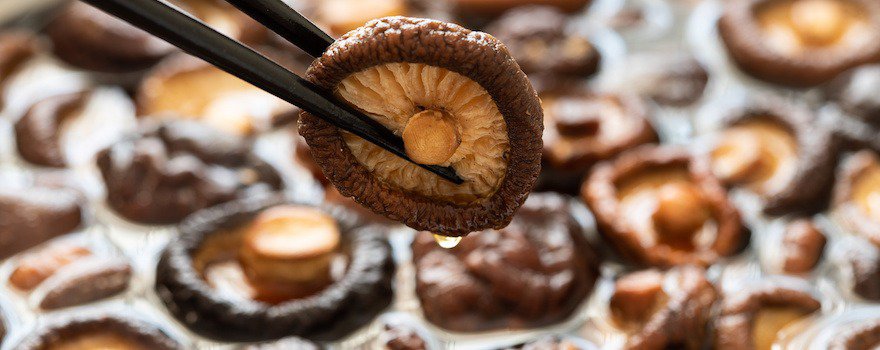
Nutritional Composition
- Proteins
- 18 amino acids (including 7 of the 8 essential ones)
- Fibers
- Vitamins: D, B2, B3, B5, and B6
- Minerals and trace elements: copper, selenium, and zinc
- Polysaccharide: lentinan
The benefits of shiitake
🔬 Potentially anti-cancer
Shiitake contains lentinan, its main active component, which is responsible for its anti-cancer properties. This polysaccharide (sugar) has anti-tumor virtues.
{{{TEMP_MARK_11}}}This study conducted by Nanchang University in China studied the role of polysaccharides, in particular lentinan, on the development of certain cancers. This other study, conducted by two Indian universities, shows the effectiveness of lentinan in reducing the spread of leukemia cancer cells.
🛡 Boosts the immune system
It is also lentinan that has properties to boost the immune system.
In Asia, it is utilized in extract form as a medicine to help patients undergoing chemotherapy or individuals with HIV to strengthen their immune system.
However, European health authorities consider that the effectiveness of shiitake in strengthening immune defenses is not established.
This study conducted by different universities in Brazil and the United States with 52 people, demonstrates the effectiveness of shiitake on immune system markers (inflammation levels…).
❤️ Protects the heart
{{{TEMP_MARK_42}}}Several of its chemical compounds – such as sterols or beta-glucans, have anti-cholesterol properties.
This study from the Korea Forest Research Institute in Seoul shows the richness of shiitake in beta-glucans and its action against hypertension and high cholesterol. This other Korean study conducted on rats shows that those who consumed shiitakes had a healthier liver, less clogged arteries, and lower cholesterol levels than those who did not eat mushrooms.
🌞 Source of Vitamin D
The shiitake is one of the rare plant sources of vitamin D, providing 154 mg per 100g.
Vitamin D is essential for the proper functioning of the body through its role in bone mineralization.
It also plays a role in the prevention of fractures and cardiovascular accidents. A sufficient intake of vitamin D is indispensable for children – for growth, and for the elderly – prevention of falls and osteoporosis.
It is mainly found in fatty fish, offal, and dairy products. Similarly, sufficient sun exposure helps effectively fix vitamin D.
This is why shiitake is recommended for vegetarians, who need to find a source of plant vitamin D, and for people who are exposed to the sun infrequently, often deficient.
How to consume shiitake ?
Prefer organic shiitake
Mushrooms belong to organisms that absorb soil pollution: in a very polluted environment, it is better not to consume specimens that grow there. This is why it is always preferable to know the origin of the mushrooms you consume.
Since the shiitake is a cultivated mushroom, it is possible to consume it organically. You can find organic shiitake, fresh or dried, in health food stores or on the Internet. You can even buy organic shiitake grown in France or grow them at home!
Fresh Shiitake
You can consume shiitake as a standalone food, cooking it like a button mushroom. Fresh, it can be eaten sautéed or grilled, as a side to meats or starchy foods, or in a stir-fry with other vegetables.
Its aromatic fragrance withstands long cooking: thus, it can also be cooked stewed or braised. While it can be eaten raw, it is generally preferable to cook it due to possible inflammatory reactions.
Like all mushrooms, it is not recommended to rinse it before eating because it might soak up water. You can quickly wash them with a vegetable brush to remove any residues.
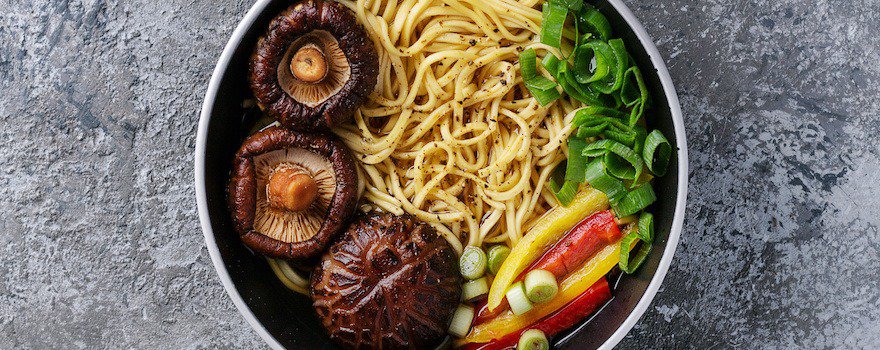
Dried Shiitake
The dried shiitake is often found in Asian or health food store aisles. Dried shiitake has essentially the same nutritional values as fresh shiitake, so you can consume either to benefit from its therapeutic virtues. Before consumption, it is rehydrated in water or broth for an hour.
Shiitake as a dietary supplement
Shiitake can be consumed as a dietary supplement. In this case, it is available in the form of capsules (dried shiitake reduced to powder), as a liquid extract, ampoules, or bottle. In Asian countries, lentinan is also found as an isolated extract, used as a medication.
However, it is considered preferable to consume the mushroom in its entirety to benefit from its richness in fibers, vitamins, and minerals.
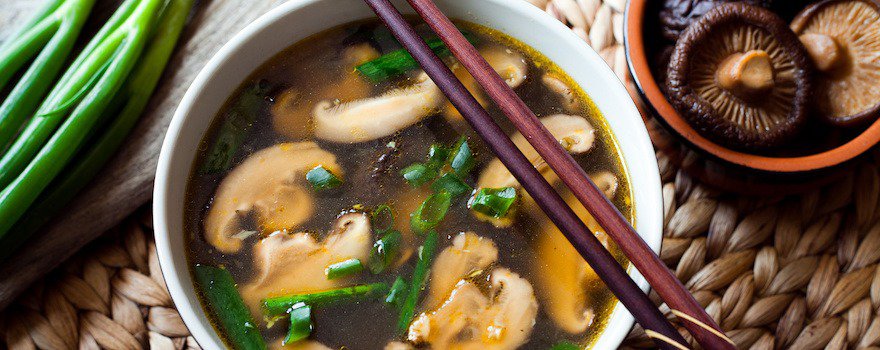
Dosage
⚖️ Dried, it is recommended to eat 6 to 16 g per day to enjoy its therapeutic effects.
⏳ Shiitake can be consumed at any time, especially since there is really no seasonality for this cultivated mushroom. Rich in vitamins, low in calories, and delicious: you can eat it regularly to stay healthy.
💊 As a dietary supplement, it may be prescribed in cases of decreased immune defenses (occasional or chronic illness, convalescence, change of season, etc.). Sometimes for mild hypercholesterolemia. In this case, the dosage should be advised by a doctor or naturopath. It can also be consumed as a cure, not exceeding six to eight weeks to avoid habituation.
Contraindications and side effects
- It poses no danger if properly cooked, but you should avoid consuming raw shiitake, as it can cause a skin condition (an eruption of small spots called flagellate dermatitis).
- It is not recommended for people suffering from hypereosinophilia (abnormal increase in white blood cells).
- Occasionally, shiitake can cause cases of hypereosinophilia or allergies.
- Consuming this mushroom can also cause slight intestinal disturbances due to its high fiber content.
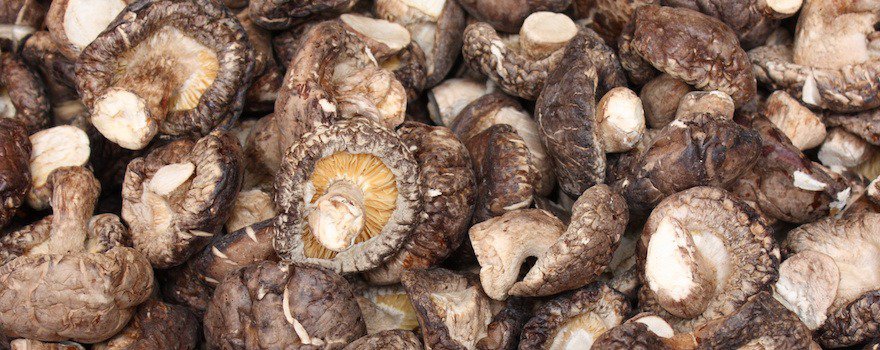
History and current culture
{{{TEMP_MARK_13}}}The most sought-after shiitakes are those with a thick cap, streaked with white with a pattern that sometimes resembles a flower, hence its nickname “flower mushroom“.
While Asians remain champions in shiitake cultivation, some producers also grow it in France where it adapts well. It’s best to favor French shiitake to reduce its carbon footprint. Shiitake can be cultivated in various ways: the traditional method practiced by the Japanese involves using wood logs placed outdoors in a damp location. The preferred wood for shiitake (“oak lentin“) is oak, a natural host when growing wild.
The Chinese prefer to cultivate it on sawdust, a more economical and environmentally-friendly method of growth. You can also find shiitakes grown on straw or other organic residues: shiitake is a saprophytic mushroom, meaning it feeds on decomposing vegetation: in nature, its preferred support would be an old stump.
You can also grow shiitakes at home. Culture kits are available commercially to grow them on logs or bales of sawdust or straw. Patience is essential as incubation times are very slow, but their taste and freshness are priceless.
Finally, you can even find organic and Parisian shiitake, cultivated in an urban farm within a disused parking lot in the north of the city!
Also read Sous les pavés les shiitakés! How La Caverne grows them in the heart of Paris
Detailed nutritional values
This data has been synthesized and verified for Darwin Nutrition by Laure Fourchaud, Doctor in nutrition physiology.
| Shiitake (dried) | /100g | %DRI* | /5g (1 tsp) | %DRI |
| Energy (kcal) | 296 | {{{TEMP_MARK_132}}} | {{{TEMP_MARK_132}}} | {{{TEMP_MARK_134}}} |
| {{{TEMP_MARK_112}}} | {{{TEMP_MARK_135}}} | {{{TEMP_MARK_118}}} | {{{TEMP_MARK_136}}} | {{{TEMP_MARK_137}}} |
| {{{TEMP_MARK_115}}} | 9.5 | — | {{{TEMP_MARK_138}}} | — |
| Macronutrients | ||||
| Protein (g) | {{{TEMP_MARK_139}}} | {{{TEMP_MARK_119}}} | 0.48 | 0.96 |
| Carbohydrates (g) | {{{TEMP_MARK_142}}} | 24.58 | 3.19 | 1.23 |
| Of which Sugars (g) | 2.21 | 2.46 | 0.11 | 0.12 |
| Lipids (g) | 0.99 | 1.41 | 0.049 | 0.07 |
| Minerals | ||||
| Calcium (mg) | 11 | 1.38 | 0.55 | 0.07 |
| {{{TEMP_MARK_114}}} | 1.72 | 12.29 | 0.09 | 0.61 |
| {{{TEMP_MARK_110}}} | 5.16 | 516.5 | 0.26 | 25.83 |
| Magnesium (mg) | 132 | 35.2 | 6.6 | 1.76 |
| Manganese (mg) | 1.18 | {{{TEMP_MARK_{{{TEMP_MARK_211}}}}}} | 0.06 | 2.94 |
| Phosphorus (mg) | 294 | 42 | 14.7 | 2.1 |
| Potassium (mg) | 1534 | 76.7 | 76.7 | 3.84 |
| {{{TEMP_MARK_111}}} | 13 | 0.52 | 0.65 | 0.03 |
| {{{TEMP_MARK_116}}} | 0.03 | 0.55 | 0.001 | 0.03 |
| {{{TEMP_MARK_113}}} | 7.66 | {{{TEMP_MARK_178}}} | 0.38 | 3.83 |
| Vitamins | ||||
| Vitamin A (mg) | — | — | — | — |
| Vitamin C (mg) | 3.5 | 4.38 | 0.17 | 0.22 |
| Vitamin D (µg) | 3.9 | 78 | 0.19 | 3.9 |
| Vitamin E (mg) | — | — | — | — |
| Vitamin B1 (mg) | 0.3 | 27.27 | 0.01 | 1.36 |
| Vitamin B2 (mg) | 1.27 | 90.71 | 0.06 | 4.54 |
| Vitamin B3 (mg) | 14.1 | 88.13 | 0.705 | 4.41 |
| Vitamin B5 (mg) | 21.9 | 365 | 1.09 | {{{TEMP_MARK_130}}} |
| Vitamin B6 (mg) | 0.97 | {{{TEMP_MARK_131}}} | 0.05 | 3.46 |
| Vitamin B9 or folate (µg) | {{{TEMP_MARK_211}}} | 81.5 | 8.15 | 4.08 |
| Vitamin B12 (µg) | — | — | — | — |
| Vitamin K (μg) | — | — | — | — |
*%NRV: % Nutrient Reference Value for an adult
Antioxidants: vitamins and minerals
Other compounds: polyols, lentinan
Report prepared by Pauline Petit and Charlotte Jean
Sources and scientific studies
U.S. Department of Agriculture, Agricultural Research Service (2014). USDA National Nutrient Database for Standard Reference, Release 27. Nutrient Data Laboratory Home Page, http://www.ars.usda.gov/ba/bhnrc/ndl
Excerpt from the Austrian 2009 database on polyols via EuroFIR FoodEXplorerFood Production Daily.
German food agency warns about Shiitake mushroom. Foodproductiondaily.com


